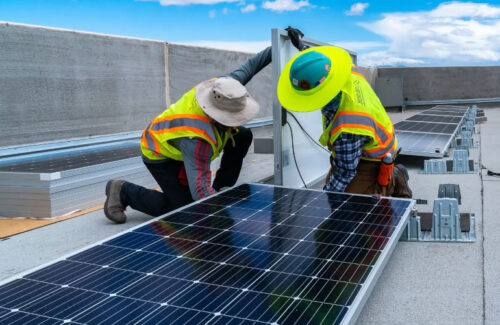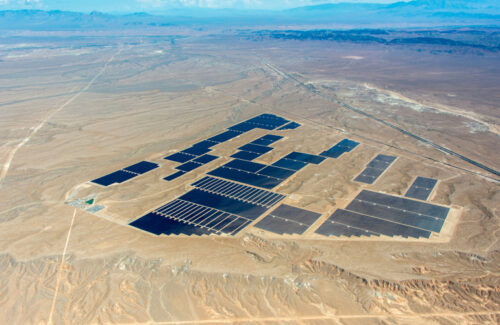Utility-scale solar is experiencing a particularly exciting boom lately, with SEIA report an increase of 22.5 GWDC of capacity in 2023, an increase of 77% compared to the previous year. Several companies are benefiting from this growth, supported by supportive federal policies and innovative technological developments.
Bomb electrically is a Las Vegas-based full-service electrician with expertise in utility-scale solar and battery energy storage. The company currently has more than 600 MW of solar installed in Nevada.
In this edition of our Contractor’s Corner series, we talk with Cliff Brooks, division manager of solar at Bombard Electric, about how technology is improving installations, the role of energy storage and recent developments in utility-scale solar.
 How does your company differentiate itself from competitors?
How does your company differentiate itself from competitors?
Bombard Electric has had a renewable energy division since 2004 and is a proud union contractor of the International Brotherhood of Electrical Workers (IBEW). The fact that we use IBEW labor for all our sustainable installations and have done so since 2004 sets us apart from most of our competitors.
How has the Inflation Reduction Act (IRA) changed the way you do business?
The passage of the IRA has leveled the playing field and allowed Bombard Electric and other union organizations to have a greater presence in the utility-scale solar/BESS sector, as well as the use of a higher apprentice-to-journeyman ratio.
How have you reduced soft costs within your company?
Our continued safety efforts have reduced some of our soft costs, such as insurance premiums and out-of-pocket expenses associated with safety incidents and accidents. We have also used prefabrication processes that allow us to pre-build certain assemblies in a climate-controlled environment and then ship them to the project.
 What improvements in solar technology have made installations easier or better?
What improvements in solar technology have made installations easier or better?
Although solar technology has come a long way, I believe that improvements in solar design software have been the most valuable advancement in our field. Some of today’s solar design software includes things like light detection and ranging (LIDAR), string configuration assistance, and detailed shading analysis, allowing for better production forecasts and more accurate solar designs.
How have recent changes in utility-scale solar energy affected your business?
Outside of the IRA, I believe the most recent change we are seeing from old to new utility-scale projects is the addition of BESS systems as a key component of the projects. The BESS element of the solar projects allows companies like Bombard Electric to expand our portfolio of work and enable affordable peak demand energy for all power consumers in Nevada.
What is your view on the future of the U.S. utility-scale solar industry?
The utility sector in the United States will only grow. As more and more coal-fired power stations are decommissioned and natural gas continues to reach record highs, there must be a need for an alternative form of energy for the masses.



